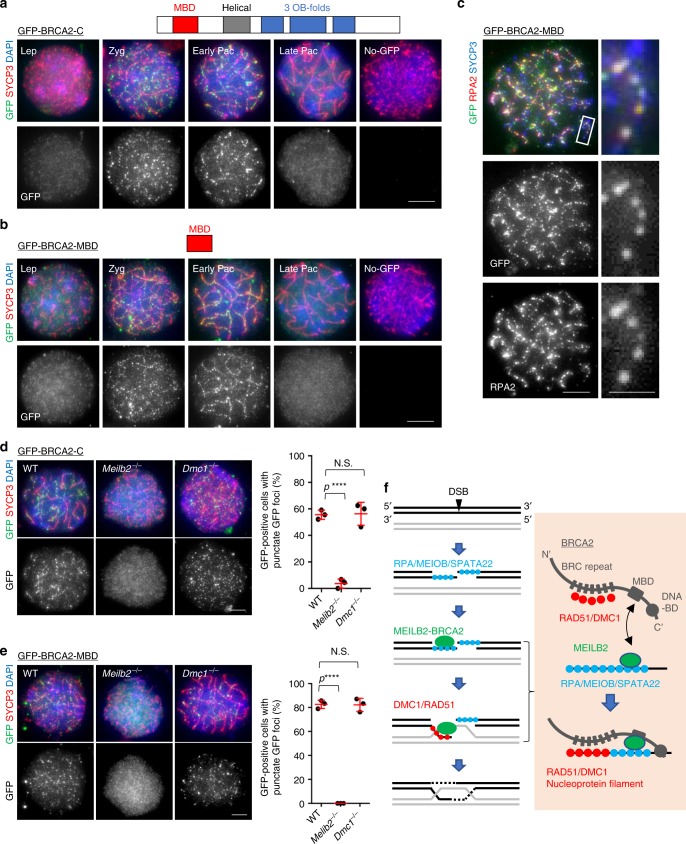Fig. 6.
BRCA2 localization during meiotic prophase I. a, b Wild-type (WT) spermatocytes expressing GFP-BRCA2-C (a) or GFP-BRCA2-MBD (b) stained with the indicated antibodies and 4,6-diamidino-2-phenylindole (DAPI). c WT zygotene spermatocytes expressing GFP-BRCA2-MBD stained with the indicated antibodies and DAPI. The quantification of co-localization was performed using nine zygotene cells pooled from three electroporated mice. The axis-associated foci were counted. d, e Zygotene spermatocytes from WT, Meilb2−⁄−, and Dmc1−⁄− males expressing GFP-BRCA2-C (d) or GFP-BRCA2-MBD (e) stained with the indicated antibodies and DAPI. The graph shows the frequency of the green fluorescent protein (GFP)-positive zygotene spermatocytes with punctate GFP foci. The mean values of three independent experiments from three different electroporated mice are shown (GFP-BRCA2-C: 63 cells in WT, 57 cells in Meilb2−⁄−, and 85 cells in Dmc1−⁄−. GFP-BRCA2-MBD: 51 cells in WT, 53 cells in Meilb2−⁄−, and 76 cells in Dmc1−⁄−). Error bars show SD. f Schematic of the hierarchical loading of meiotic double-strand break (DSB)-associating proteins. After DSB formation by SPO11, the double-strand DNA is resected into single-strand DNA (ssDNA). RPA is loaded onto the ssDNA, which is epistatic to the localization of MEILB2. MEILB2 is then recruited to the DSBs, likely through binding to RPA or SPATA22-MEIOB, and this in turn recruits BRCA2 through the MEILB2–MEILB2-binding domain (MBD) interaction. BRCA2 then facilitates the loading of the RAD51 and DMC1 recombinases onto the ssDNA, resulting in the formation of a nucleoprotein filament that promotes DNA strand invasion. Lep leptotene, Zyg zygotene, Pac pachytene, Dip diplotene. All analyses used two-tailed t tests. N.S. not significant. ****p < 0.0001. Scale bars, 5 and 1 μm (magnified panel). Source data are provided as a Source Data file

